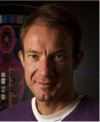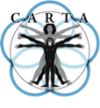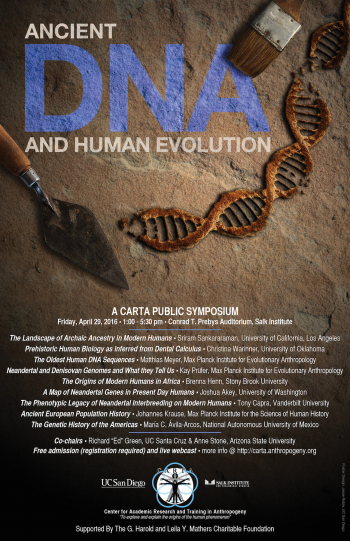Ancient DNA and Human Evolution
Richard Green , University of California, Santa Cruz
Anne Stone, Arizona State University
Summary:
Ancient DNA data have provided unprecedented insights into the recent history of our species. In particular, methodological improvements and innovations over the last ten years have advanced our ability to recover small fragments, target specific sequences, identify damage patterns, and obtain genome scale data. As a result, we have evidence for admixture among modern and archaic humans as well as greater appreciation for the complexity of population histories for modern humans around the world. This symposium brings together researchers at the forefront of ancient DNA research and population genetics to discuss current developments and share insights about human migration and adaptation.
Media for each talk can be played by clicking on icons in the table below, or by clicking on the individual talk titles below and then the attachment file at the bottom of the page.
| Speakers | Media | Session |
|---|---|---|
 Pascal Gagneux |
|
Welcome |
 Richard Green |
|
Opening Remarks |
 Sriram Sankararaman |
|
The Landscape of Archaic Ancestry in Modern Humans One of the major discoveries to come out of the analyses of the genomes of archaic humans such as Neanderthals and Denisovans is that of admixture between these archaic and present-day human populations. We now know that non-African populations today trace about 2% of their ancestry to a population related to the Neanderthals while populations from Australia and New Guinea carry additional ancestry related to the Denisovans. By viewing these admixtures as natural, genome-scale perturbations,... read more |
 Christina Warinner |
|
Prehistoric Human Biology as Inferred from Dental Calculus Advanced molecular methods have revealed a startling fact - that our bodies are not merely ourselves. Microorganisms comprise more than half of our cells, contain 99% of our genes, and perform vital functions in digestion, immunity, and homeostasis. Yet while we have made great strides in revealing the diversity, variation, and evolution of the human genome, we know surprisingly little about the microbial portion of ourselves, our microbiome. Recently, it has been discovered that dental... read more |
 Matthias Meyer |
|
The Oldest Human DNA Sequences Over the past years, genomic sequences have been retrieved from hundreds of ancient human remains as well as those of extinct human relatives such as Neanderthals and Denisovans. However, due to constraints on DNA preservation in non-permafrost environments, genetic analyses of human fossils are usually limited to the Late Pleistocene (the last 125,000 years). Recently, improvements to DNA extraction and library preparation techniques have enabled the reconstruction of a mitochondrial genome... read more |
 Kay Prüfer |
|
Neandertal and Denisovan Genomes and What They Tell Us The study of the genomes of our closest extinct relatives allows for insights into the recent evolutionary history of anatomically fully modern humans. The discovery of ancient remains with extraordinary preservation from a cave in the Altai mountains allowed us to generate high coverage genomes sequences from two archaic human individuals, a Neandertal and a Denisovan. The analysis of these genomes reveals that that they are more closely related to one another than they are to modern humans.... read more |
 Brenna Henn |
|
The Origins of Modern Humans in Africa Over twenty-five years ago, geneticists sequenced mitochondrial DNA from a diverse sample of human populations and hypothesized that all humans have a common origin in Africa 200,000 years ago. The broad outlines of this hypothesis remain remarkably unaltered, but many details of our African origin continue to be elusive. After decades of advances in human genetics, we are no longer data limited - either in terms of DNA samples or genomic loci, but there is little consensus on many key issues.... read more |
 Joshua Akey |
|
A Map of Neandertal Genes in Present Day Humans Anatomically modern humans overlapped in time and space with Neandertals, and genetic data has revealed that hybridization occurred. We have developed methods to identify Neandertal sequences that persist in the DNA of modern individuals, and applied it to whole-genome sequences from over 1,500 geographically diverse individuals. We leverage the catalog of surviving Neandertal sequences to show that admixture occurred multiple times in different non-African populations, characterize genomic... read more |
 Tony Capra |
|
The Phenotypic Legacy of Neandertal Interbreeding on Modern Humans Many modern human genomes retain DNA inherited from interbreeding with archaic hominins, such as Neandertals, yet the influence of this admixture on human traits is largely unknown. We analyzed the contribution of common Neandertal variants to over 1000 electronic health record (EHR)–derived phenotypes in ~28,000 adults of European ancestry. We discovered and replicated associations of Neandertal alleles with neurological, psychiatric, immunological, and dermatological phenotypes. Neandertal... read more |
 Johannes Krause |
|
Ancient European Population History Ancient DNA can reveal pre-historical events that are difficult to discern through the study of archaeological remains and modern genetic variation alone. Our research team analyzed more than 200 ancient human genomes spanning the last 10,000 years of Western Eurasian pre-history. We find direct evidence for two major genetic turnover events at the beginning and at the end of the Neolithic time period in Europe. Our data provide strong support of a major migration of early farmers spreading... read more |
 María Ávila-Arcos |
|
The Genetic History of the Americas Generally perceived as the carriers of the biological properties of species, genomes also harbor the demographic history of populations. By studying patterns of genetic variation of modern populations, it is possible to dissect the demographic events that occurred in their journey through time. In addition, recent advances in the field of ancient DNA have considerably broadened our knowledge of past events in the history of humans. Yet, a majority of these studies have focused on populations of... read more |
 Anne Stone  Speakers and Audience  Ajit Varki |
|
Question and Answer Session, Closing Remarks |
| Attachment | Size |
|---|---|
| 1.4 MB | |
| 1.31 MB | |
| 209 KB | |
| 679.16 KB |
If you enjoy this event, please consider supporting CARTA's quest to explore and explain the human phenomenon.


